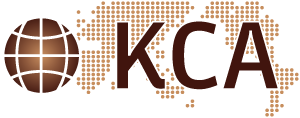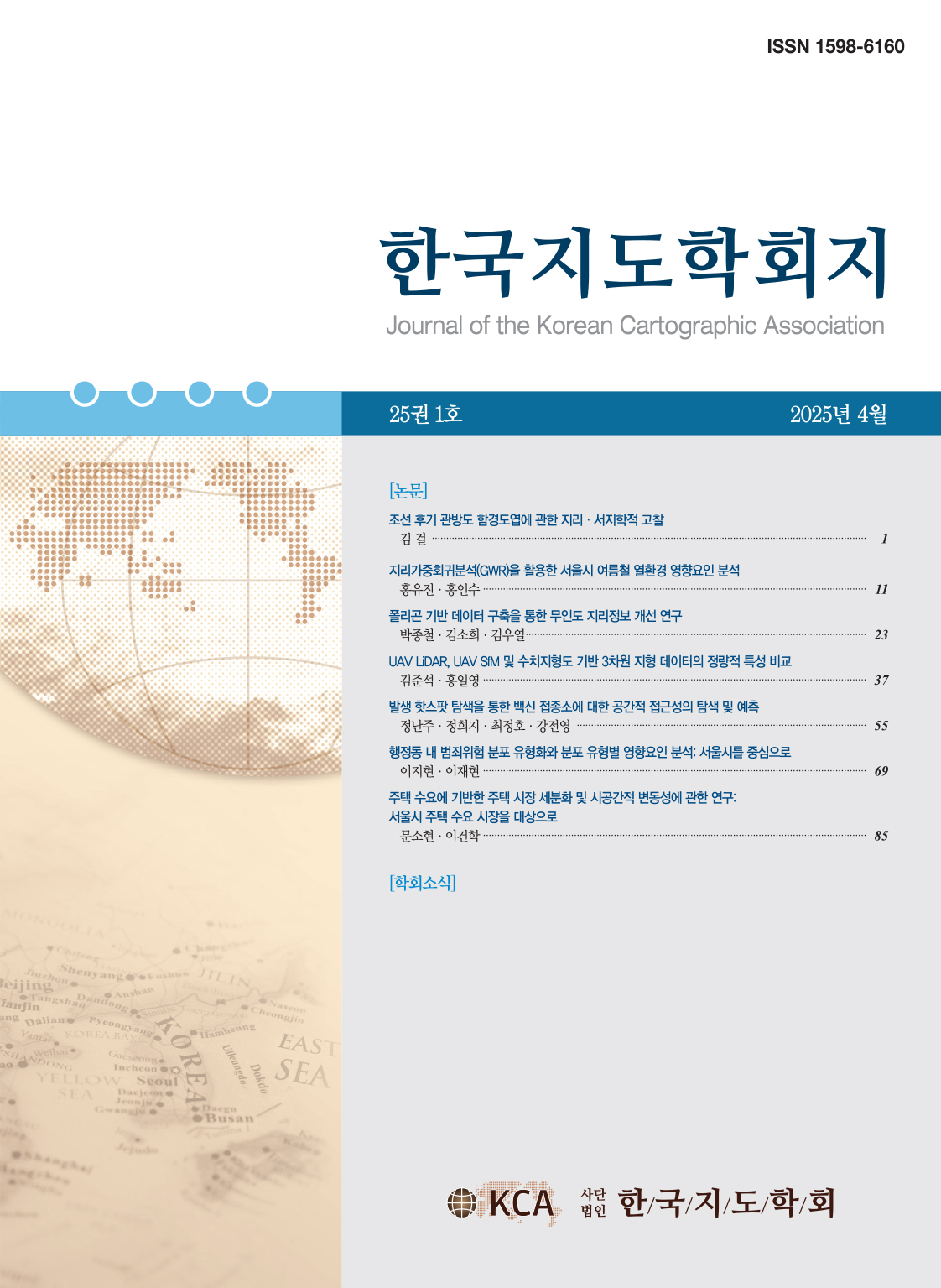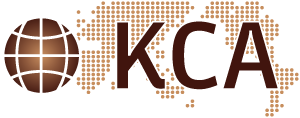Research Article
Abstract
References
Information
In recent years, the COVID-19 has entered into pandemic era in the world and the Republic of Korea. The strengthened social distancing measure has been taken in Seoul Metropolitan City whose COVID-19 confirmed cases were higher than the other provinces. This research aims to investigate the spatial patterns of nighttime lights (NTL) change and potential correlation between the confirmed cases and the changes of NTL for the city and its local governments, using nighttime remotely sensed imagery and land use and land cover data. The increase of nighttime illumination in residential land use was identified in most local governments, and it was found to be strongly associated with both the physical area of residential land use and COVID-19 confirmed cases. In contrast, the decrease of NTL in commercial area observed in some regions, and it was correlated only with the physical area of commercial land use. In association with this results, a future study is expected to incorporate the other variable such as floating population for analyzing the NTL change of commercial land use.
최근 코로나바이러스감염증-19(코로나-19)는 전 세계뿐만 아니라 국내에서도 대유행 단계에 접어들고 있다. 코로나-19 발생률이 높은 서울특별시에서는 다른 광역시도보다 강화된 사회적 거리두기가 적용되고 있다. 본 연구는 토지피복지도와 야간 인공위성 영상자료를 활용하여 2020년 4월과 2021년 4월 사이의 서울특별시 자치구별 야간 빛세기 변화 패턴을 조사하였고, 누적 확진자와 야간 조도 변화 간 상관분석을 수행하였다. 주거지역의 빛세기 증가는 대부분 자치구에서 나타났고, 면적 및 코로나-19 누적 확진자 수와 강한 정적 상관관계가 도출되었다. 특정 지역에 한정되어 나타난 상업지역의 빛세기 감소는 면적과 상관성이 있었으나 코로나-19 누적 확진자와는 상관성이 없는 것으로 분석되었다. 따라서 향후 연구에서는 유동인구와 같은 다른 변인과 상업지역의 야간 조도 변화를 고찰할 필요성이 제기된다.
- 국가통계포털, 2021, 국내총생산 및 경제성장률 (GDP), 통계청.
- 김민호, 2021, "코로나바이러스감염증-19 대유행에 따른 광역시도별 야간 인공조명 강도의 시공간 변화," 국토지리학회지, 55(2), 183-192.
- 김민호, 2020a, "야간 인공조명 강도와 토지피복을 이용한 남한의 광역시도 인구 추정," 한국지도학회지, 20(2), 13-24. 10.16879/jkca.2020.20.2.013
- 김민호, 2020b, "북한 지역의 SNPP VIIRS DNB 야간영상에 나타난 이례적 복사도 분포의 시공간적 특성," 한국지도학회지, 20(1), 81-92. 10.16879/jkca.2020.20.1.081
- 김민호, 2019, "DMSP-OLS 영상자료를 이용한 중국 접경지역 경제성장의 시・공간적 역동성 추정," 한국지도학회지, 19(2), 65-77. 10.16879/jkca.2019.19.2.065
- 박수은, 2020, "코로나바이러스감염증-19의 바이러스(SARS-CoV-2) 특징, 전파 및 임상 양상," 대한소아감염학회, 27(1), 1-10.
- 보건복지부, 2021, 수도권 등 2단계 지역은 유흥시설 집합금지 집합금지, 중앙사고수습본부 보도자료(2021년 4월 9일).
- 서울특별시, 2021, 서울시 코로나 19 확진자 현황, 서울 열린데이터 광장.
- 주재욱・노승철・윤종진, 2021, "코로나19 확산이 서울 지역에 미친 경제적 손실," 정책리포트 제322호, 서울연구원.
- 질병관리청, 2021, 코로나바이러스감염증-19(COVID-19) 시도별 발생동향(2021년 7.31.00시 기준).
- 통계청, 2021, 코로나 19 - 국내, https://kosis.kr/covid/ covid_index.do
- 환경부, 2021, 토지피복지도 제작현황 개요.
- 케이웨더, 2021, 과거날씨, https://www.kweather.co.kr/ kma/kma_past.html
- Bustamante-Calabria, M., Miguel A.S., Martin-Ruiz, S., Ortiz, J., Vilchez, J.M., Pelegrina, A., Garcia, A., Zamorano, J., Benie, J., and Gaston, K.J., 2021, Effects of the COVID-19 lockdown on urban light emissions: Ground and satellite comparison,
Remote Sensing , 13, 258. 10.3390/ rs13020258 - Chakraborty, I., and Maity, P., 2020, COVID-19 outbreak: Migration, effects on society, global environment and prevention,
Science of The Total Environment , 728, 10.1016/j.scitotenv.2020.138882 - Ciotti, M., Angeletti, S., Minieri, M., Giovannetti, M., Benvenuto, D., Pascarella, S., Sagnelli, C., Bianchi, M., Bernardini, S., and Ciccozzi, M., 2019, COVID-19 outbreak: An overview,
Chemotherapy , 64, 215-223. 10.1159/000507423 32259829 PMC7179549 - Cucinotta, D. and Vanelli, M., 2020, WHO declares COVID-19 a pandemic,
Acta Biomed , 91(1), 157-160. - Elvidge, C.D., Ghoshi, T., Hsu, F., Zhizhin, M., and Bazilian, M., 2020, The dimming of lights in China during the COVID-19 pandemic,
Remote Sensing , 12, 2851. doi:10.3390/rs12172851 10.3390/rs12172851 - ESRI, 2021, Optimized hot spot analysis (spatial statistics).
- Ghoshi, T., Elvidge, C.D., Hsu, F., Zhizhin, M., and Bazilian M., 2020, The dimming of lights in India during the COVID-19 pandemic,
Remote Sensing , 12, 3289. doi:10.3390/rs12203289 10.3390/rs12203289 - Levin, N., and Q. Zhang, 2017, A global analysis of factors controlling VIIRS nighttime light levels from densely populated area,
Remote Sensing of Environment , 190, 366-382. 10.1016/j.rse.2017.01.006 - Liu, Q., Sha, D., Liu, W., Zhang, L., Hou, R., Lan, H., Flynn, C., Lu, M., Hu, T., and Yang, C., 2020, Spatiotemporal patterns of COVID-19 impact on human activities and environment in mainland China using nighttime light and air quality data,
Remote Sensing , 12(10), 10.3390/ rs12101576. - MBN, 2021, "데이터로 본 '코로나19 여파지도," https://www.mbn.co.kr/news/economy/4059581
- NOAA (National Oceanic and Atmospheric Administration), 2014, Visible Infrared Imaging Radiometer Suite (VIIRS) Imagery Environmental Data Record (EDR) User's Guide (Version 1.1).
- Wang, Z., Roman, M., Kalb, V., Shretha, R., Stokes, E., and Paynter, I., 2020, Uncertainties in VIIRS nighttime light time series analysis,
IGARSS 2020 , 2020 IEEE International Geoscience and Remote Sensing Symposium. 10.1109/IGARSS39084.2020.9324690 - Wang, Z., Xiong, X., Fulbright, J., and Lei, N., 2017, VIIRS day/night band radiometric calibration stability using the Moon,
Journal of Geophysical Research: Atmospheres , 122, 5616-5624. 10.1002/2016JD026372 - WHO (World Health Organization), 2020a, Novel coronavirus (2019-nCoV), Situation Report-1, 21 January 2020, https://www.who.int/docs/default-source/coronaviruse/situation-reports/20200121-sitrep-1-2019-ncov.pdf
- WHO (World Health Organization), 2020b, WHO Director-General's remarks at the media briefing on 2019-nCoV on 11 February 2020, URL: https://www.who.int/director-general/speeches/detail/who-director-general-s-remarks-at-the-media-briefing-on-2019-ncov-on-11-february-2020
- WHO (World Health Organization), 2021, WHO Coronavirus (COVID-19) Dashboard, https://covid19. who.int/?adgroupsurvey={adgroupsurvey}&gclid=CjwKCAjwxo6IBhBKEiwAXSYBs-89PpTYRZhSeCCWpD12i5oagVr8k9KfIkk2x_F1WiV0RHx_BYaMRxoCMSUQAvD_BwE
- Publisher :The Korean Cartographic Association
- Publisher(Ko) :한국지도학회
- Journal Title :Journal of the Korean Cartographic Association
- Journal Title(Ko) :한국지도학회지
- Volume : 21
- No :2
- Pages :105-116
- DOI :https://doi.org/10.16879/jkca.2021.21.2.105



 Journal of the Korean Cartographic Association
Journal of the Korean Cartographic Association





